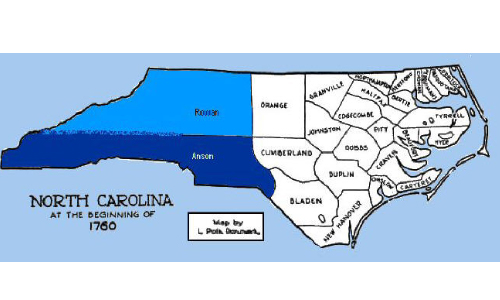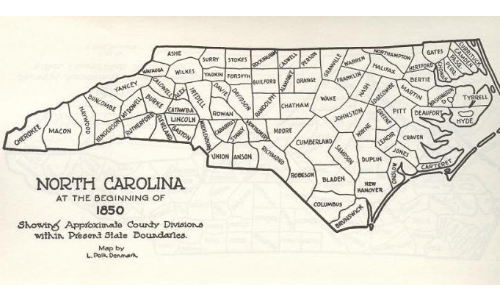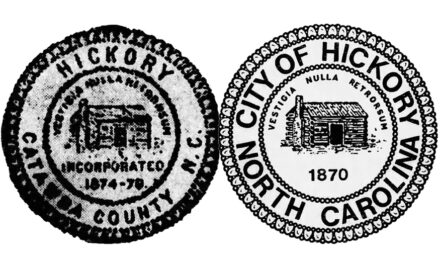
We think today of Catawba County’s borders as logical and finite, the outline of the county as recognizable as that of the state of North Carolina. But thirty years before Hickory became an official town in the county of Catawba, the land upon which Hickory Tavern did business was part of Lincoln County. It was a secession movement in late 1842 that separated the northern half of Lincoln as Catawba County. Prior to 1777, Lincoln had been part of Rowan County. Even earlier as the first European settlers were moving into the region, known then as the back country, it was all Anson County.

Catawba County in 1760
Once Catawba County was established, it too became subject to its own secession movement. The big one came when the whole South attempted its removal from the United States of America, and while that one led to four years of devastating war, there were others. None ever came to fruition but that did not stop folks from trying.
Hickory, being the largest town in the region became the center for creation of a new county to be taken from parts of Burke, Caldwell, Alexander and enough of Catawba to be designated as the county seat. In turn, The folks from Alexander County offered to annex the “dissatisfied” parts of Catawba. Neither idea got off the ground.
In 1891, western North Carolinians were apparently tired of long trek to Raleigh to handle state business. Instead, they wanted to break away and form a new state that included Catawba County. Names were bandied about including Franklin (like the movement one hundred years earlier in East Tennessee), Clingman (named for the Confederate general for whom Clingman’s Dome is named) and Sevier (the Revolutionary War general and first governor of Tennessee). They seemingly settled on calling it “Sevier” and argued which city should be the capital, Asheville or Lenoir.
That secession movement went nowhere, as did this notice:

Catawba County in 1850
“Considerable interest, it is said, is being created in regard to the forming of Granite County out of part of Catawba, Caldwell and Burke, with Granite Falls as the county seat. It is suggested by some that Hickory be included in the bounds of the new county.”
The prime reason supporters argued for a new county centered around access to the county seat. Claiming it was 20 miles for some folks, the new Granite County supposedly offered closer access. No one mentioned that Hickory folk would have to cross the Catawba River to get there (instead of Newton).
In the end, Hickory stayed where it was all along, a North Carolina city, Catawba County’s largest. While some have suggested other configurations, talk is all that has occurred and we all know the value of talk.









